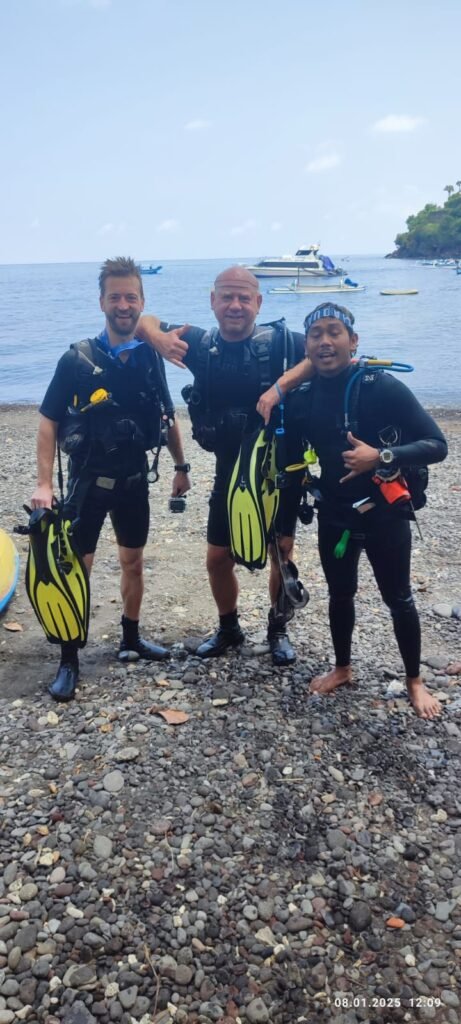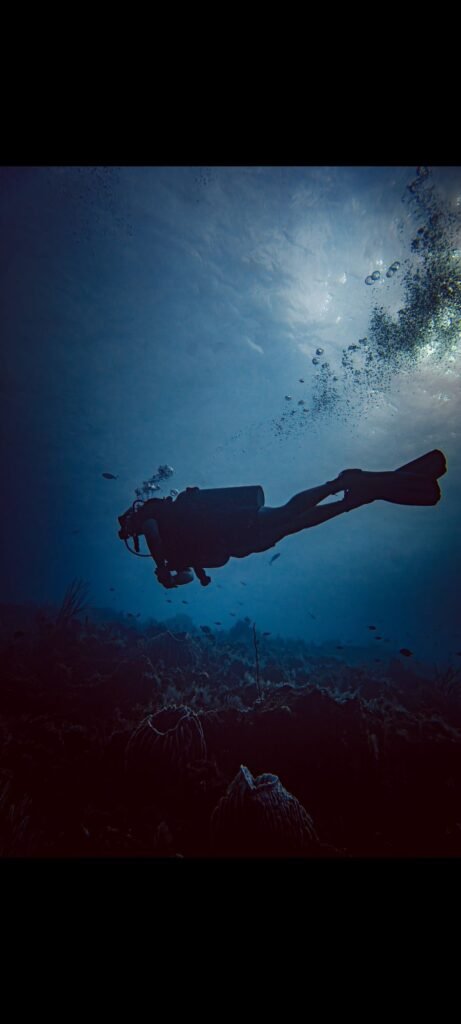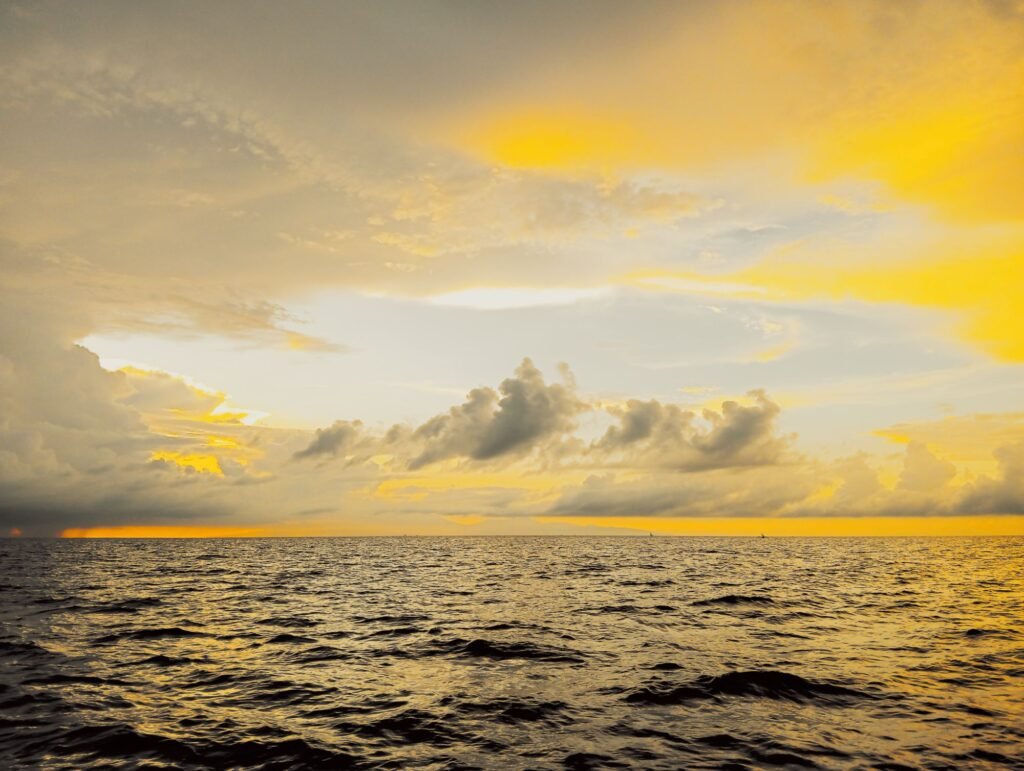Outline
- Introduction to Bali as a Diving Destination
- Why Bali is a Top Choice for Divers
- Overview of Bali’s Marine Biodiversity
- Best Time to Dive in Bali
- Seasonal Diving Conditions
- Weather and Water Temperature
- Top Dive Sites in Bali
- Tulamben and the USAT Liberty Wrek
- Nusa Penida: Manta Point and Crystal Bay
- Amed: Serene Reefs and Macro Life
- Menjangan Island: Pristine Marine Park
- Padang Bai: Blue Lagoon and Jetty
- Unique Marine Life in Bali
- Mola Mola (Sunfish) Season
- Manta Rays and Reef Sharks
- Macro Critters for Underwater Photography
- Types of Diving in Bali
- Wreck Diving
- Coral Garden
- Walls
- Drift Diving
- Night Diving
- Freediving and Snorkeling

6. Diving for Beginners in Bali
Best Dive Spots for Beginners
Bali is a welcoming destination for divers of all levels, especially beginers. Sites like Tulamben and Amed are perfect starting points due to their calm waters and easy shore entries. The famous USAT Liberty Wreck in Tulamben lies just a few meters from the shore, offering a shallow yet captivating dive.
Safety Tips for New Divers
For beginners, safety is crucial. Always dive with a certified guide, check your equipment thoroughly, and follow the dive plan. It’s important to understand hand signals and basic underwater communication. New divers should also be mindful of buoyancy to avoid damaging the coral reefs and protect marine life.
7. Advanced Diving Experiences in Bali
Technical Diving Adventures
For seasoned divers, Bali offers thrilling technical diving opportunities. Locations like the deeper sections of the USAT Liberty Wrek and the challenging currents around Nusa Penida are perfect for advanced exploration. We provide specialized courses for Nitrox, deep diving, and wreck penetration, unlocking access to more demanding underwater environments.
Our best dive sites are between Jap Wreck and Gili Selang where you’ll encounter the most beautiful coral and the most abundant marine life of Bali. We go there with our comfortable boat.

Night Diving at Tulamben
Night diving offers a completely different perspective on Bali’s underwater world. The USAT Liberty Wreck transforms after sunset, revealing nocturnal creatures like Spanish dancers, octopuses, and hunting moray eels. Advanced divers can explore these eerie, yet beautiful, environments under the glow of a dive torch.
8. Bali’s Marine Conservation Efforts
Coral Restoration Projects
Bali is actively involved in marine conservation through coral restoration initiatives. In Pemuteran, the Bio-Rock Project uses electrical currents to stimulate coral growth, creating artificial reefs that attract marine life. Divers can participate in eco-dives and learn about sustainable diving practices while witnessing these restoration efforts firsthand.
Marine Protected Areas (MPAs)
Areas like Menjangan Island and Nusa Penida are designated as Marine Protected Areas. These zones are carefully managed to preserve biodiversity and protect critical habitats. Regulations in MPAs help prevent overfishing and coral damage, ensuring long-term sustainability for diving tourism.
Eco-Friendly Dive Operators
Many dive centers in Bali are embracing eco-friendly practices. These include banning single-use plastics, conducting regular reef cleanups, and educating divers on reef-safe sunscreen. Supporting these operators contributes to the protection of Bali’s fragile marine ecosystems.
9. Essential Diving Gear for Bali
Recommended Equipment
While many dive centers offer full gear rentals, bringing personal equipment ensures comfort and a better fit. Essentials include a 3mm wetsuit for Bali’s tropical waters, a mask and snorkel, and open-heel fins for shore entries. Divers heading to colder waters around Nusa Penida during Mola Mola season may prefer a 5mm wetsuit for extra warmth.
Photography Gear for Underwater Exploration
Bali’s diverse marine life and vibrant reefs make it a paradise for underwater photographers. Macro photographers flock to Amed and Tulamben for critter hunting, while wide-angle enthusiasts will love capturing manta rays at Manta Point. Waterproof cameras like GoPros or more advanced setups with strobes and macro lenses are popular choices.
Dive Computers and Safety Gear
A dive computer is crucial for monitoring depth, time, and decompression limits. Additionally, carrying a surface marker buoy (SMB) is recommended, especially in current-prone areas like Nusa Penida. Safety tools such as a whistleor dive alert system enhance diver visibility and communication.
10. Bali Dive Resorts and Liveaboards
Top Dive Resorts in Bali
Bali is home to many dive resorts that combine comfort with direct access to world-class dive sites. Resorts in Tulambenand Amed offer beachfront accommodations with on-site dive centers. Popular options include Liberty Dive Resort and Villa Markisa, known for their luxury amenities and personalized dive experiences.
Liveaboard Diving Around Bali
For divers seking to explore remote sites, liveaboard trips are an excellent option. Vessels departing from Bali often cruise to the Nusa Tenggara islands, Komodo National Park, and the Banda Sea. These trips provide access to less-visited reefs, seamounts, and pelagic hotspots, offering multi-day diving adventures.
Budget-Friendly Accommodations for Divers
Budget travelers can also find affordable guesthouses and dive lodges, especially in Amed, Padang Bai, and Sanur. Many budget accommodations partner with local dive shops, providing packages that include lodging, gear rental, and guide dives at competitive prices.

11. Cost of Diving in Bali
Price Breakdown for Dive Trips
Diving in Bali is relatively affordable compared to other global dive destinations. A single fun dive typically costs between $30 to $50, including equipment rental and a guide. Packages for multiple dives often offer discounts, with 3-dive day trips averaging $100 to $130. Specialty dives, such as wreck dives or trips to Nusa Penida, may cost slightly more due to transportation and park fees.
PADI and SSI Certification Costs
For those looking to get certified, Open Water Diver courses range from $350 to $500, which covers theory lessons, pool training, open water dives, and certification fees. Advanced Open Water Diver courses typically cost around $350 to $450, allowing divers to explore deeper dives and specialty experiences like night diving or wreck exploration.
Budgeting for Liveaboard Trips
Liveaboard diving in Bali and surrounding regions is more of an investment. Prices for a 3 to 5-day liveaboard range from $600 to $1,500, depending on the vessel’s comfort level and itinerary. Luxury liveaboards exploring further destinations like Komodo or the Banda Sea can cost upwards of $2,500 for extended trips.
12. Cultural Experiences Beyond Diving
Exploring Bali’s Temples and Heritage
Bali isn’t just about diving; it’s also rich in culture and tradition. Popular temples like Tanah Lot, Besakih Temple, and Uluwatu Temple offer insights into Balinese spirituality and architecture. Many divers enjoy blending cultural exploration with theire dive trips, visiting temples between dive days.
Balinese Cuisine and Local Markets
Trying local Balinese food is a must. Dishes like Nasi Goreng (fried rice), Babi Guling (roast pork), and Sate Lilit (spiced fish satay) offer a flavorful experience. Local markets in Ubud and Sanur are great places to sample fresh tropical fruits and authentic street food.
Adventure Activities for Divers
For thrill-seekers, Bali offers activities like surfing in Uluwatu, white-water rafting in Ayung River, and hiking Mount Batur for sunrise views. These experiences complement diving adventures and allow visitors to explore Bali’s diverse landscapes.
13. How to Choose the Right Dive Center in Bali
Certifications and Safety Standards
When selecting a dive center, check for certifications from organizations like PADI, SSI, or CMAS. A reputable dive shop prioritizes safety with well-maintained equipment, certified instructors, and comprehensive dive briefings.
Eco-Friendly and Sustainable Practices
Opt for dive centers that emphasize eco-friendly practices, such as reef-safe sunscreen policies, plastic reduction, and involvement in conservation projects. Participating in clean-up dives or coral restoration programs contributes to the health of Bali’s reefs.
Reading Reviews and Testimonials
Online reviews on platforms like TripAdvisor and Google can provide insight into a dive center’s reputation. Look for feedback on safety measures, equipment quality, instructor professionalism, and costomer service to make an informed choice.
14. Travel Tips for Diving in Bali
Visa and Entry Requirements
Most travelers can enter Bali with a Visa on Arrival (VoA), valid for 30 days and extendable once. It’s essential to check visa regulations based on your nationality before traveling.
Health and Safety Precautions
Diving requires physical fitness, so ensure you’re in good health before diving. It’s recommended to have travel insurance that covers diving activities. Additionally, wait at least 18-24 hours after diving before flying to avoid decompression sickness.
Transportation Around Bali
Getting around Bali is easy with various options like scooter rentals, private drivers, and ride-hailing apps like Grab. For dive trips to areas like Nusa Penida, fast boats operate daily from Sanur Beach.

15. Conclusion: Why Bali is a Diver’s Paradise
Bali stands out as one of the world’s top diving destinations, offering something for every diver. From exploring the hauntingly beautiful USAT Liberty Wreck to swimming alongside graceful manta rays at Nusa Penida, the island’s underwater world is as diverse as its vibrant culture. Whether you’re a beginner learning to dive or an advanced diver seeking thrilling drift dives, Bali provides endless opportunities for unforgettable underwater adventures.
Bali’s commitment to marine conservation, coupled with its rich cultural heritage and affordable dive packages, makes it a must-visit destination for divers worldwide. So, pack your gear, embrace the island’s warmth, and dive into the mesmerizing marine wonders that await you in Bali.
FAQs
1. What is the best time of year to dive in Bali?
The best time to dive in Bali is between April and November, during the dry season when visibility is at its peak and sea conditions are calm.
2. Do I need a diving certification to dive in Bali?
Not necessarily. Beginners can try Discover Scuba Diving experiences that don’t require certification but include guided dives with instructors.
3. Can I see manta rays all year round in Bali?
Yes, manta rays can be seen year-round at Manta Point near Nusa Penida, but sightings are more frequent during the dry season.
4. Are there dive sites suitable for children in Bali?
Yes, sites like the Blue Lagoon in Padang Bai and Tulamben are safe and ideal for children, especially with family-friendly dive centers offering junior dive courses.
5. Is Bali safe for solo travelers who want to dive?
Absolutely! Bali is very popular among solo travelers. Many dive centers offer group dives and social evants, making it easy to meet fellow divers and explore together.


